Banana bread can become rubbery if the mixture is overworked. This can happen if you try to mix the wet and dry ingredients all together at the same time. This can overwork the flour, developing the gluten and causing the bread to become tough.
This article will explore 8 ways to fix rubbery banana bread and how you can avoid it.

8 Causes of rubbery banana bread and how to fix them
Check out the top causes of rubbery banana bread and what to do to fix each one.
1. Overmixing the batter
Overmixing the banana bread ingredients is the top reason why banana bread can become rubbery. When the flour is overmixed, the gluten will develop (like regular bread) causing the bread to become bouncy and tough.
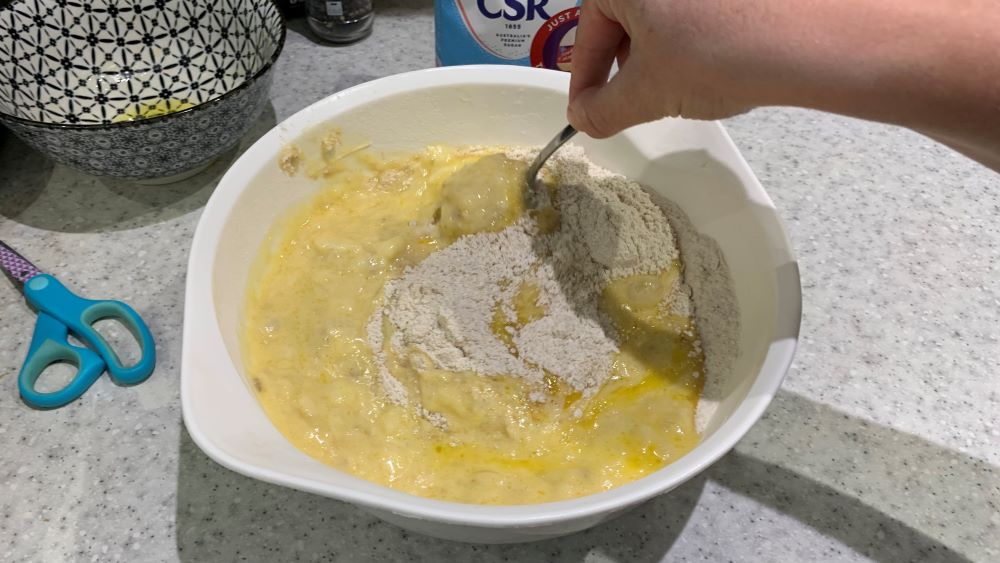
2. Mixing the wet and dry ingredients at the same time
To avoid rubbery banana bread, start by mixing the wet ingredients together. Mix the dry ingredients together like the flour and sugar. You can then gently bring the ingredients together in a bowl using a wooden or metal spoon.
Gently mix the flour into the center until it is just combined. Don’t worry if there are still small lumps. This is usually just the banana which will cook down.
For more on this, check out my article: Should Banana Bread Batter be Lumpy? | 5 Causes of Lumps
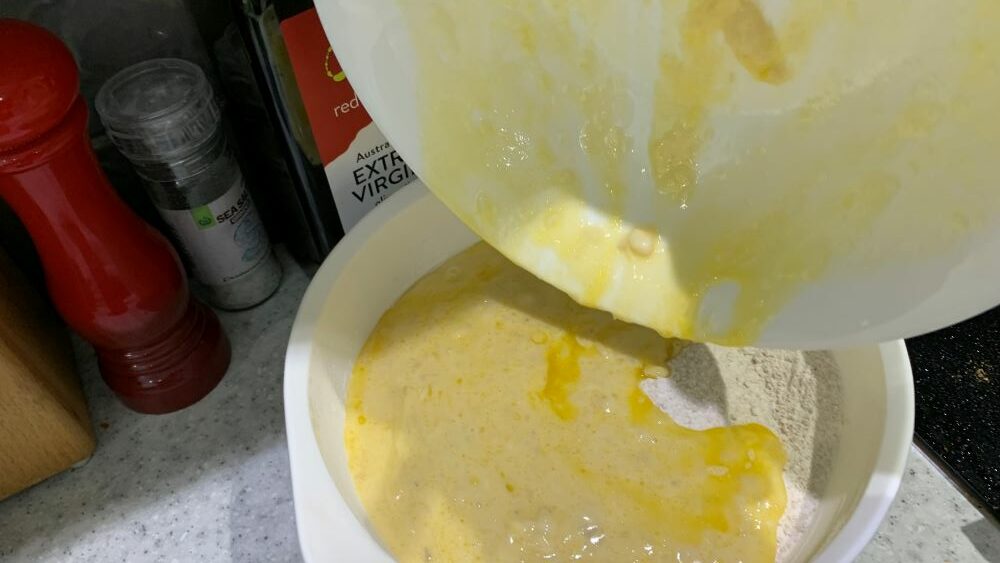
3. Adding too much banana
Adding too much mashed banana can cause the mix to become rubbery. Adding extra mashed banana will add extra moisture and can cause the bread to become soggy and rubbery.
Adding extra banana usually needs extra mixing which will also cause the gluten to develop too far and cause the bread to be rubbery.
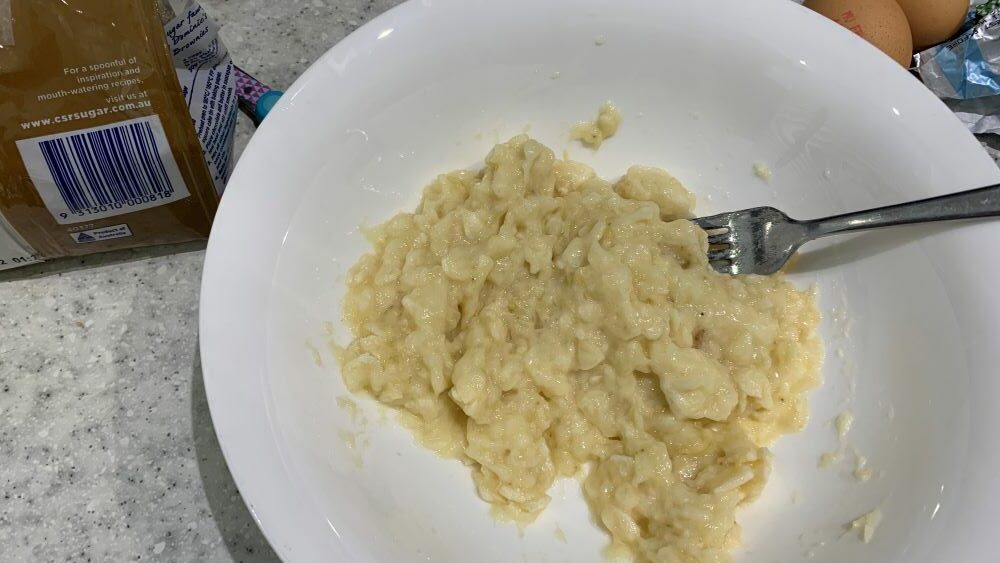
4. Adding under ripe bananas
Adding underripe bananas to your banana bread can cause the bread to become dense, flavorless and rubbery. Underripe bananas have a high starch level and are hard to mash. This will give your banana bread a thick and dense texture.
To get the best banana bread add 2 medium extra ripe bananas to your mix. Look for bananas that have a black spots on their skins. They will be extra ripe, full of flavor and easy to mash. Remember to mash them thoroughly before adding them to the mix.
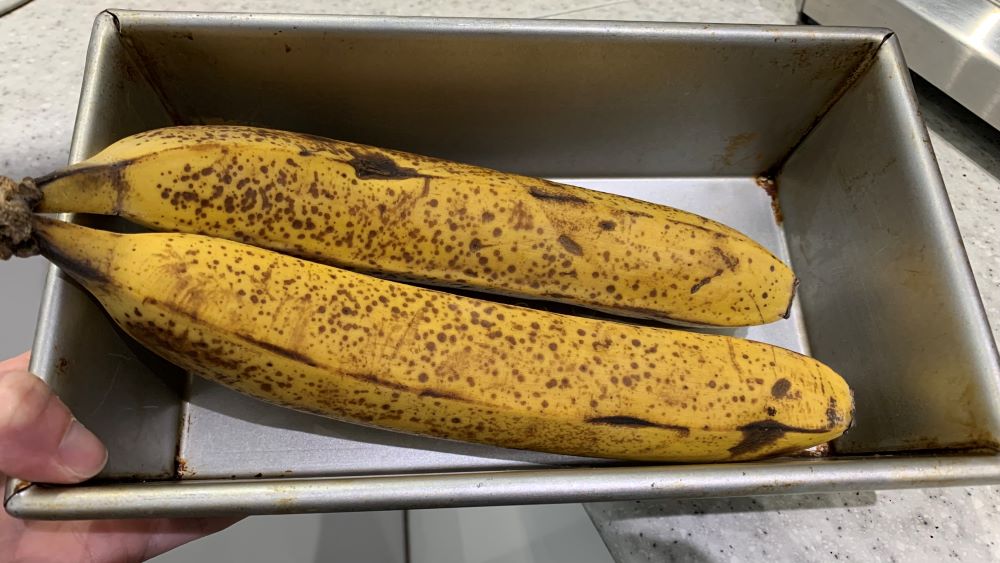
5. Opening the oven door before the banana bread is cooked
Baking the banana bread at the correct temperature is essential to make sure it rises, becomes light and you avoid rubbery bread.
Opening the oven door before the banana bread is cooked will let the hot air escape, dropping the temperature of the oven and can cause the undercooked bread to drop. This can cause the banana bread to become dense and even rubbery.
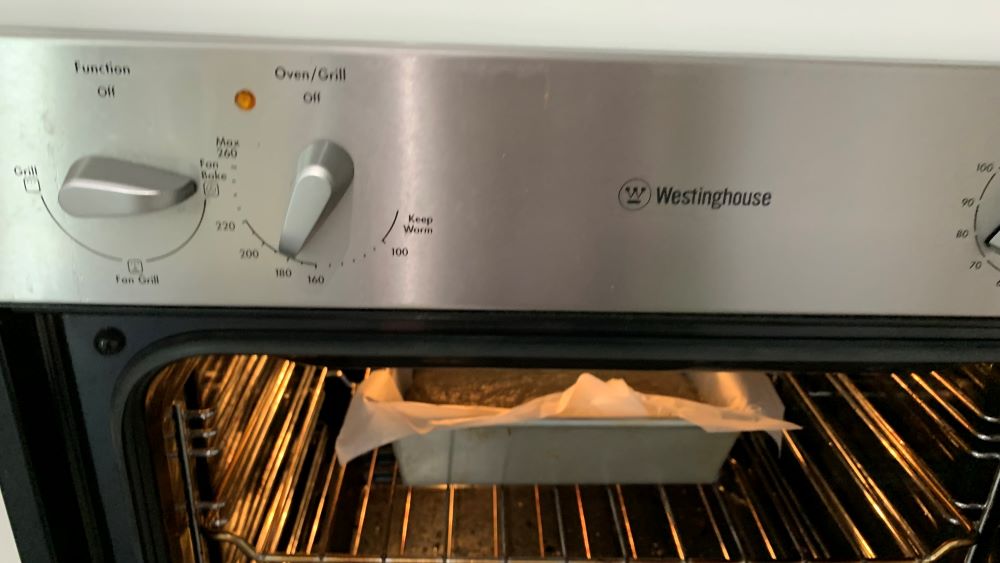
6. Setting the oven temperature too low
Baking banana bread at a temperature that is too low can cause the bread to become dense and rubbery. If the temperature is too low the bread will not rise, leaving the banana bread staying flat and dense.
Use a oven thermometer if you are not sure if your oven is heating correctly. For fan forced ovens I like to set my oven to 355 degrees Fahrenheit (180 degrees Celsius) for banana bread.
Make sure you preheat the oven before placing the bread in so you don’t overcook the edges.
7. Missing out the baking powder
If you forget to add the baking powder to banana bread then it can turn out dense, thick and rubbery. The baking powder will create air bubbles as it reacts to the acidic ingredients in the mix causing the bread to rise.
Baking powder will be included in banana bread recipes that use plain flour.
If you are using self-raising flour, then it will already have some baking powder added. Most recipes will specify extra baking powder to give banana bread the lift it needs.
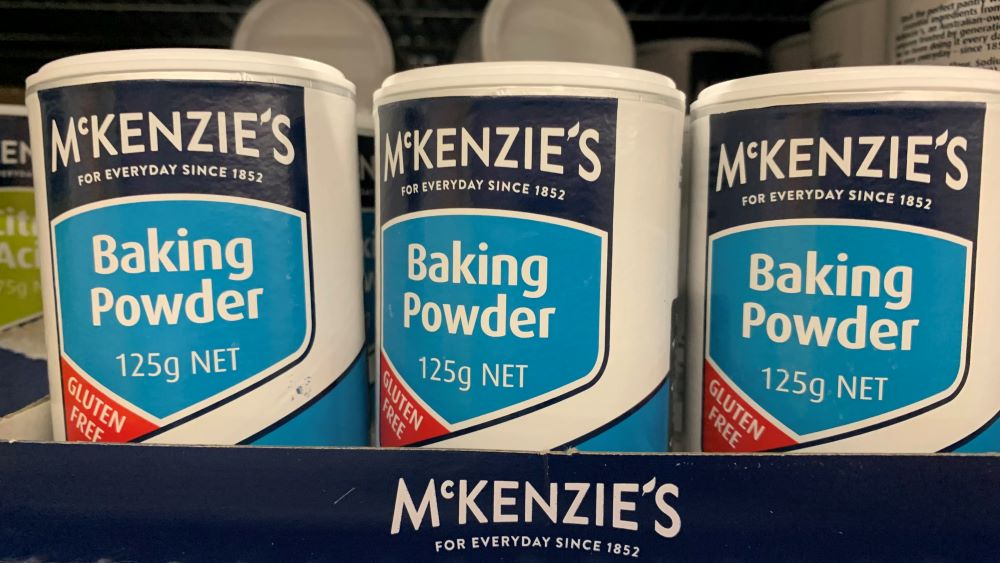
8. Not adding enough flour
Not adding enough flour to your banana bread can cause it to become dense and rubbery. Just like for brownies, if you add more flour you will get a more ‘cakey’ outcome. If you add less flour you will get heavier bread.
Make sure you measure the flour accurately. I like to use a kitchen scale and measure the ingredients in grams to make sure I get it correct.

How to Fix Rubbery Banana Bread | Summary
The top cause of rubbery banana bread is overworking the flour. This will cause the gluten to develop and the bread will taste rubbery. Make sure you mix the batter gently, use ripe bananas and cook the bread at the correct temperature. Wait until the cooking time is 5 minutes away from finishing and then open the oven to check to see if it is done.
I am an accredited practicing dietitian, experienced gardener and a dedicated cook. I love writing and sharing my experience so you can learn from my successes and mistakes.
